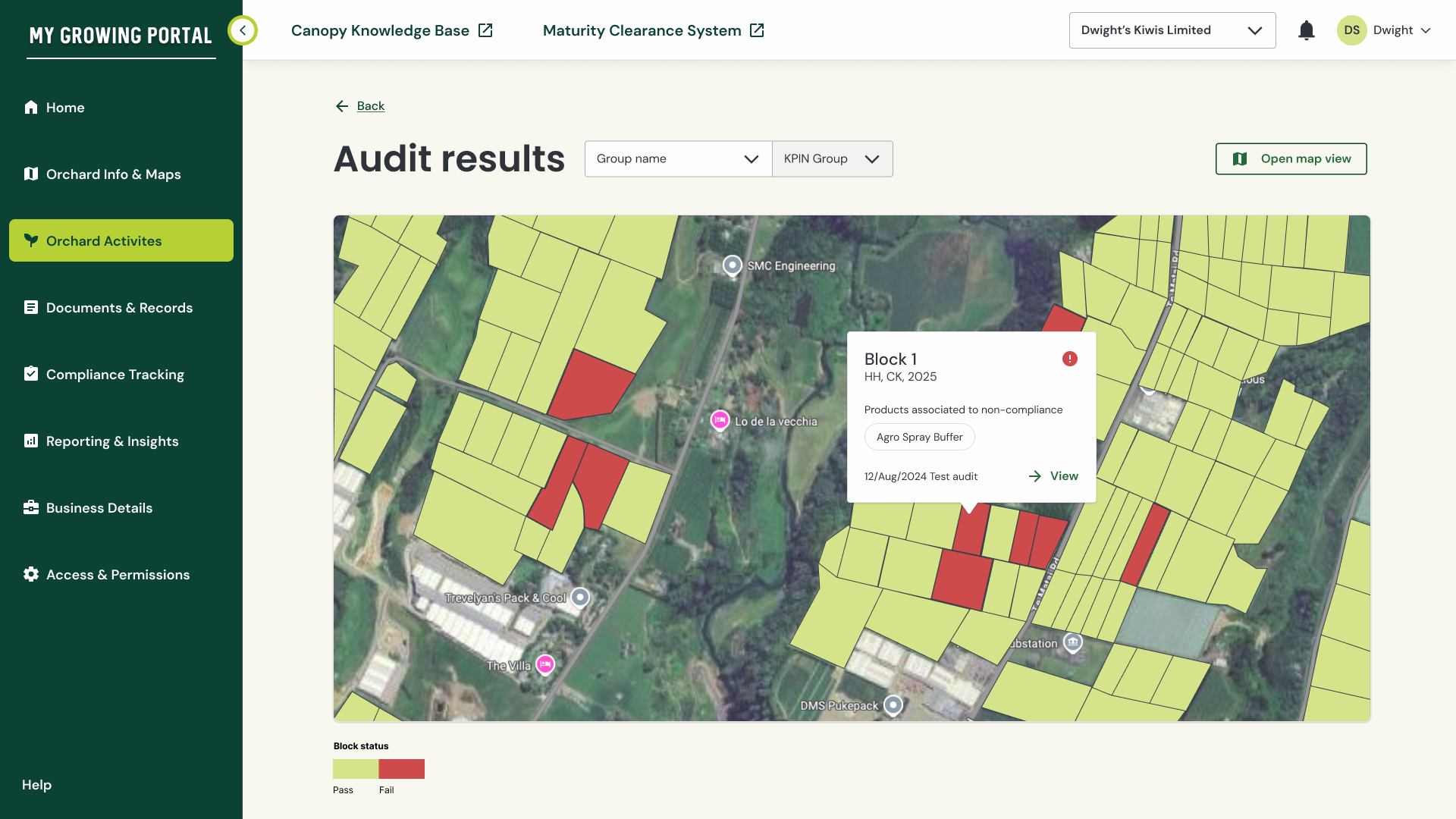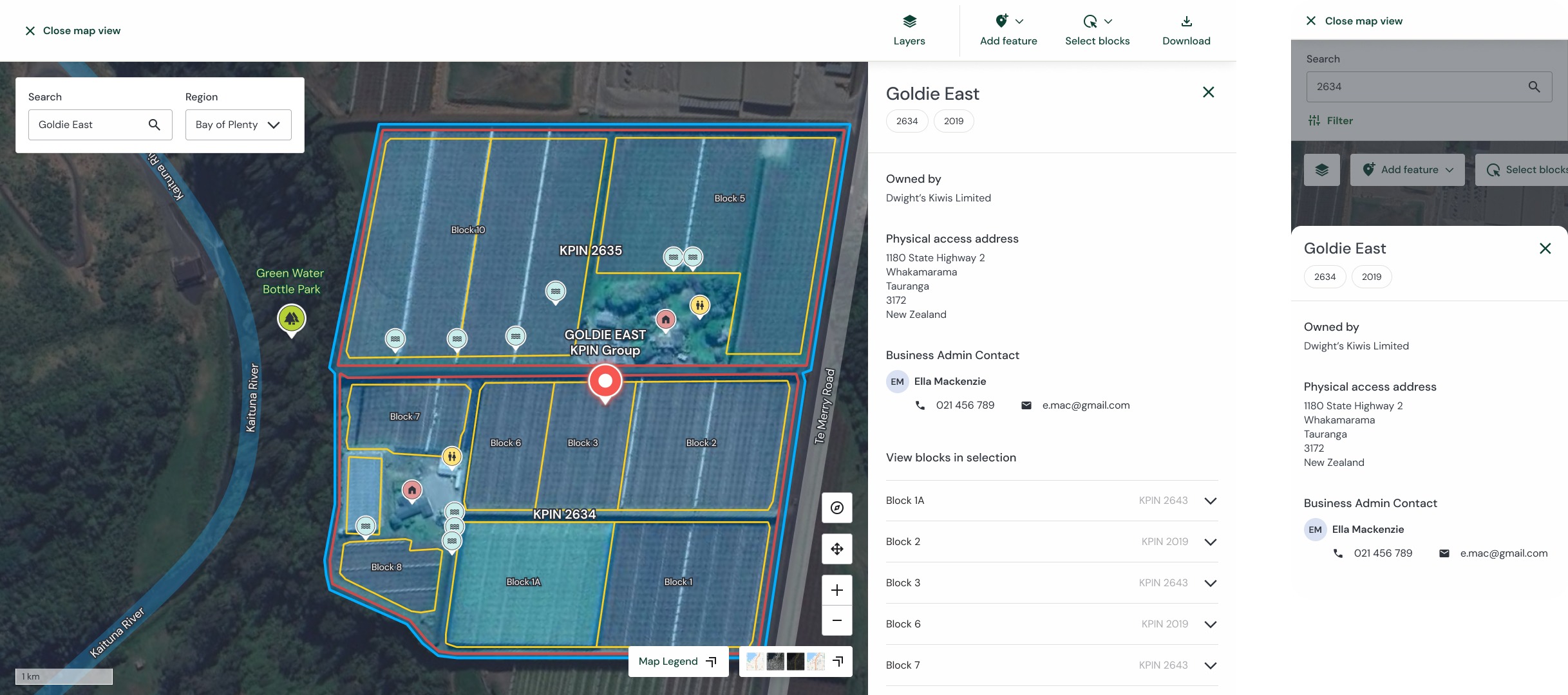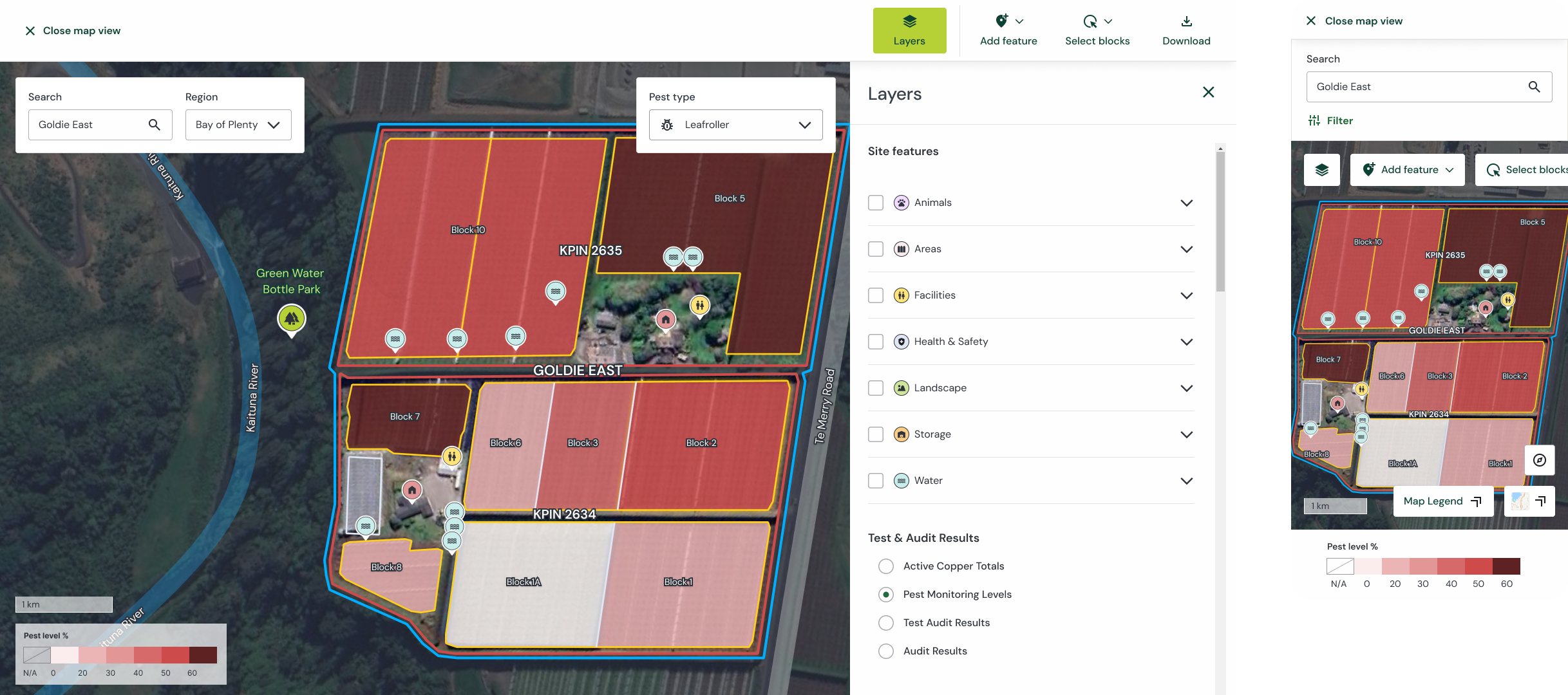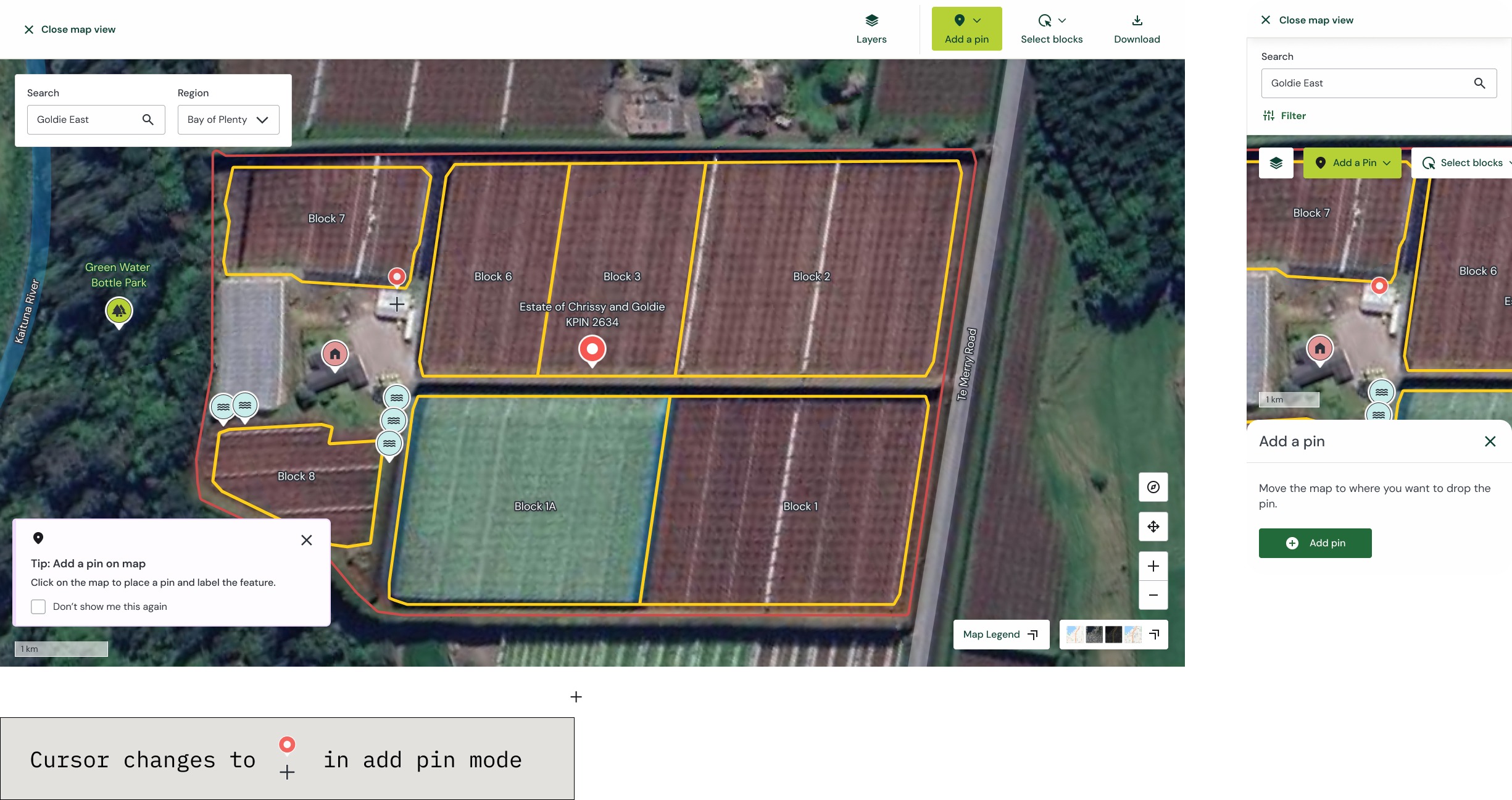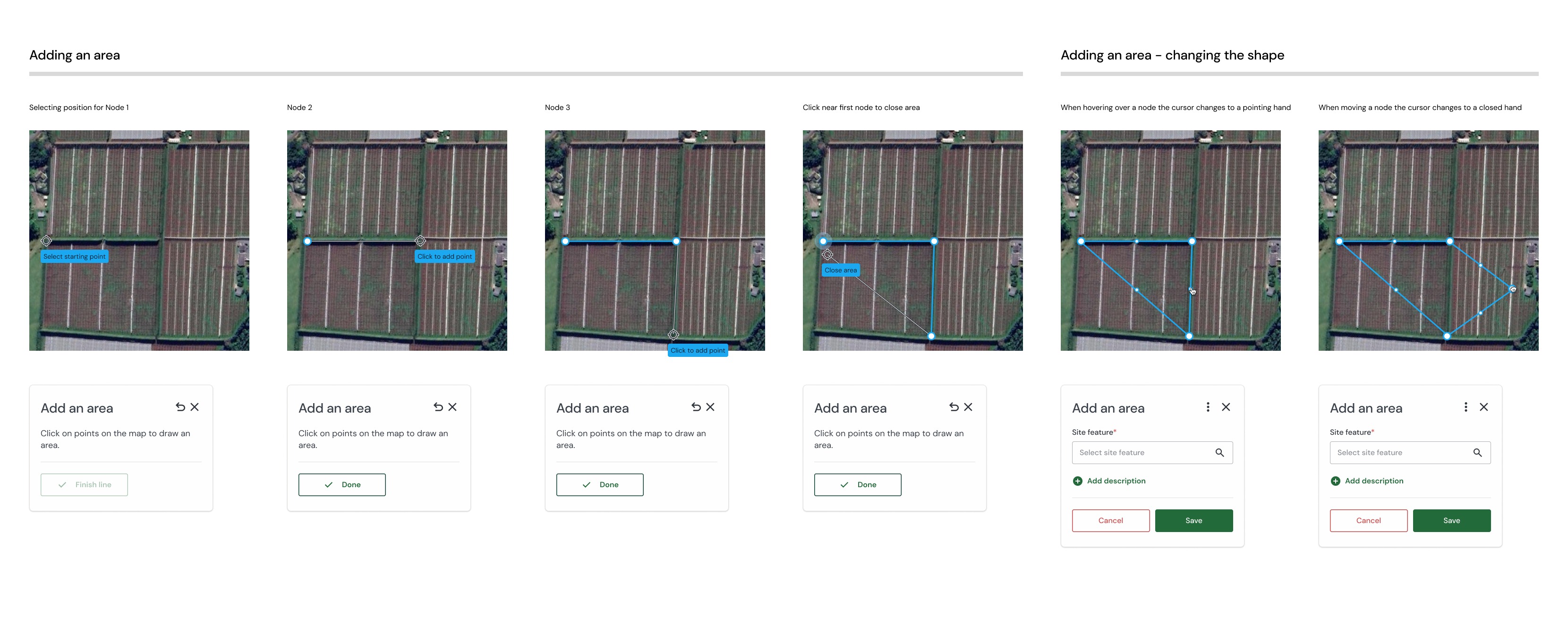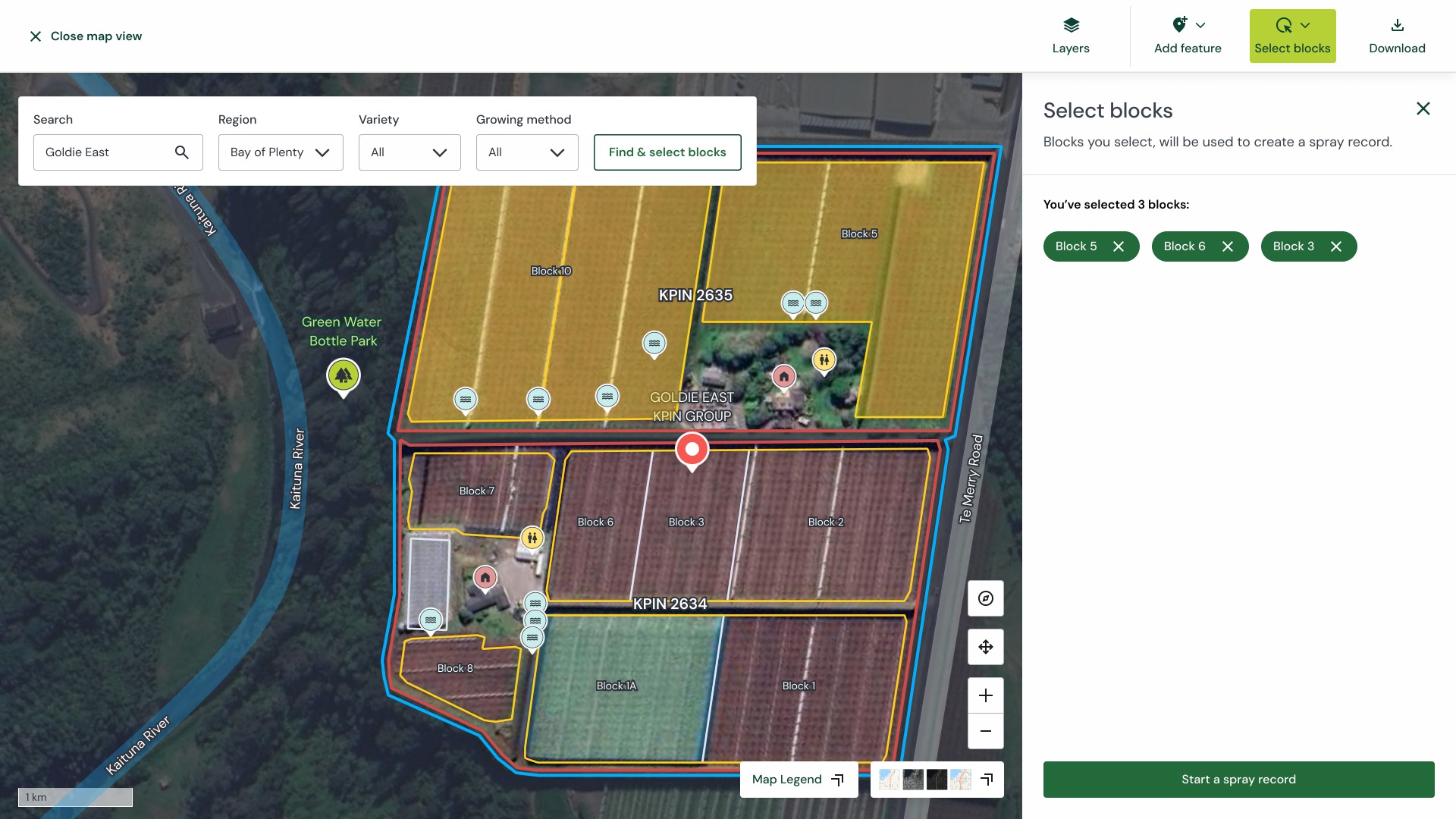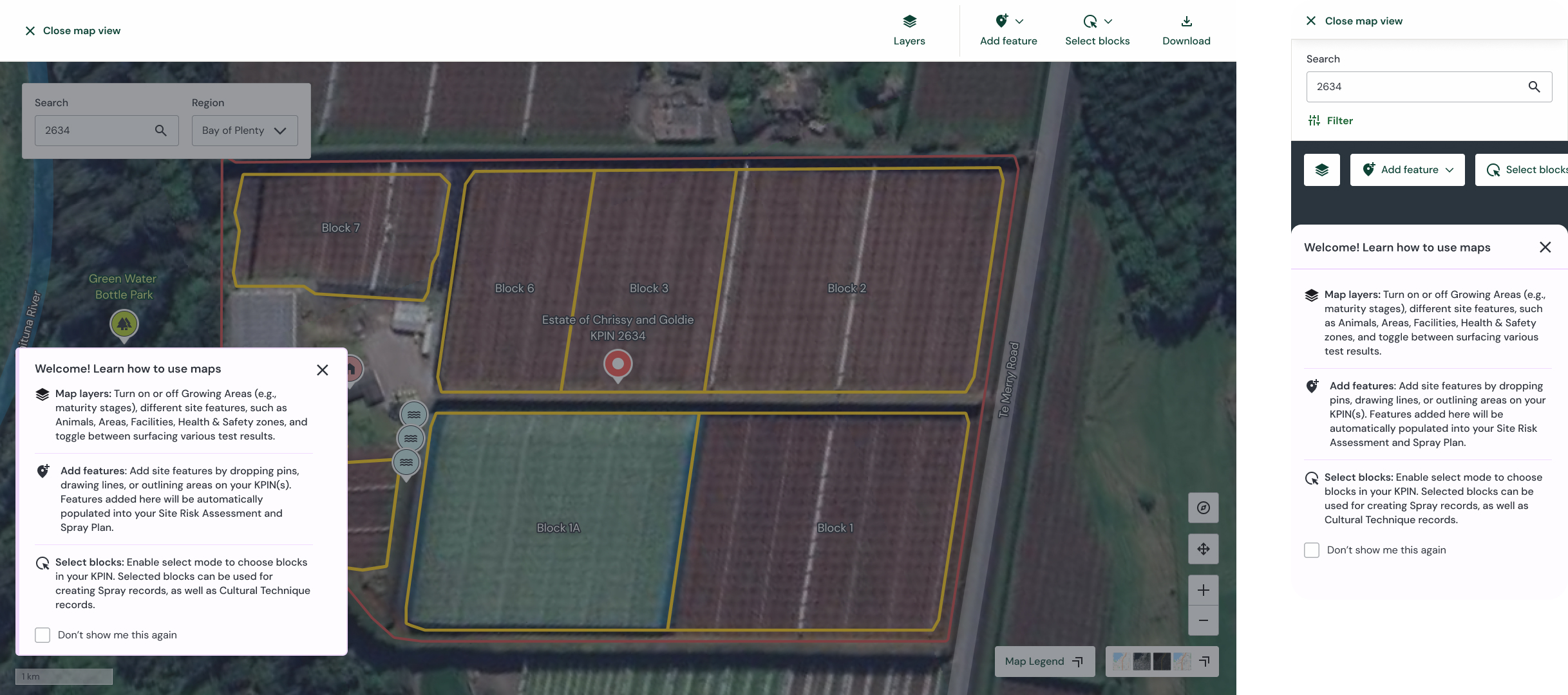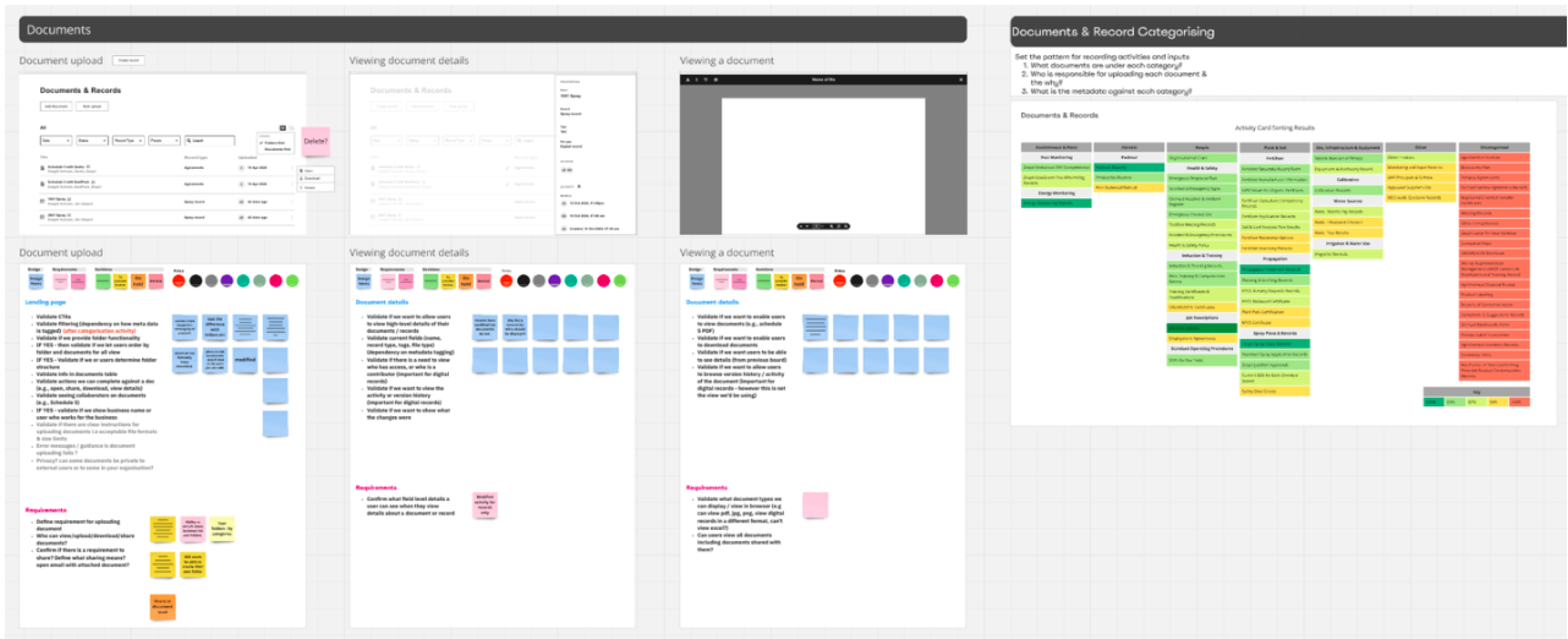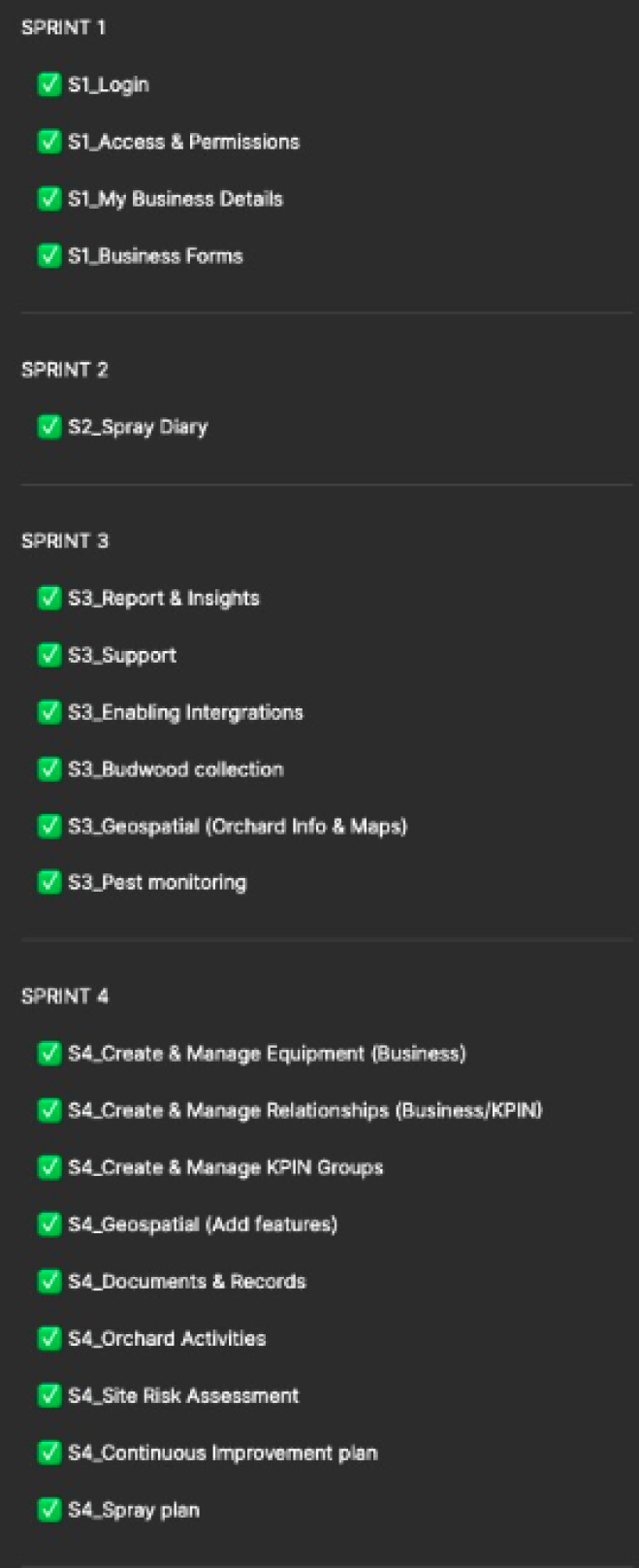10-WEEK DESIGN SPRINT
Navigate a complex team structure under tight deadlines to deliver impactful large-scale designs through effective collaboration
Over the course of 5 sprints, we organised features into cohesive groups and target each group per sprint, transitioning from box drawing to comprehensive design. We started each sprint by preparing a collaborative Miro board with guiding questions and current state analyses. We then conducted three full days of in-person co-design workshops with Zespri subject matter experts and growers. These workshops were co-facilitated with business analysts, allowing us to explore edge cases, real-world scenarios, and regulatory requirements thoroughly alongside growers and stakeholders.
Following the conclusion of week 1 of the sprint, we transformed rough concepts into polished, high-fidelity, responsive screens. To ensure clarity and alignment, we conducted regular playback sessions to validate designs. Our daily development check-ins with the third-party vendor, along with mid-sprint playback sessions, design reviews with Azure map experts, compliance team assessments, consultations with the head of UX, and concurrent research workstream. Design didn't just execute, we glued the team and create a dynamic UXD-centric collaboration. This proactive internal and client-side engagement is crucial for securing endorsement at the conclusion of each sprint.
When it comes to design hygiene and practices, we prioritize making our design files easily accessible and comprehensible for both team members and reviewers, following these essential best practices:
- Every workflow has direct links to the relevant Jira stories.
- Each screen should be annotated, including the feature number, flow number, screen number, and any variations.
- Cover edge cases, micro interaction, and error states to assist the non-Deloitte development team.
- Proactively clean up the design library to ensure templates are reusable, and promptly create new components and UX guidelines to share with other designers.
“The value your team provided in 10 weeks exceeded what we’ve seen over 6-month engagements.” - Zespri Horizon Programme Leader



